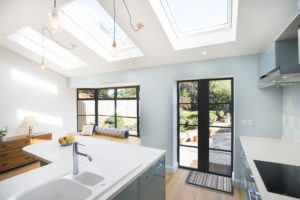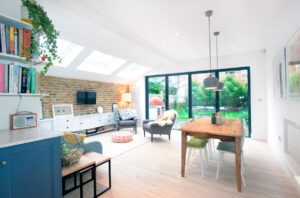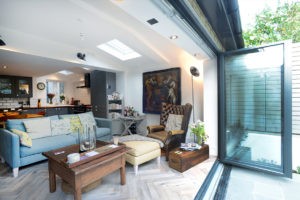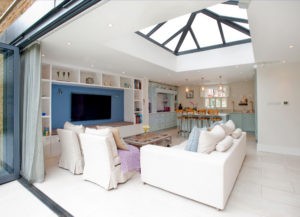Building a child-friendly home involves more than just providing a safe and secure setting for children. It is also about creating a space where they can feel comfortable, happy, and free to explore their surroundings.
The first step is to recognise potential hazards and take preventative measures, for example covering electrical outlets. Another important consideration when creating a child-friendly home is creating a space that encourages learning and creativity. While also providing activities to stimulate your child’s imagination and encouraging them to learn through play.
Therefore, we have put together our top recommendations for you to consider while designing a child-friendly house.
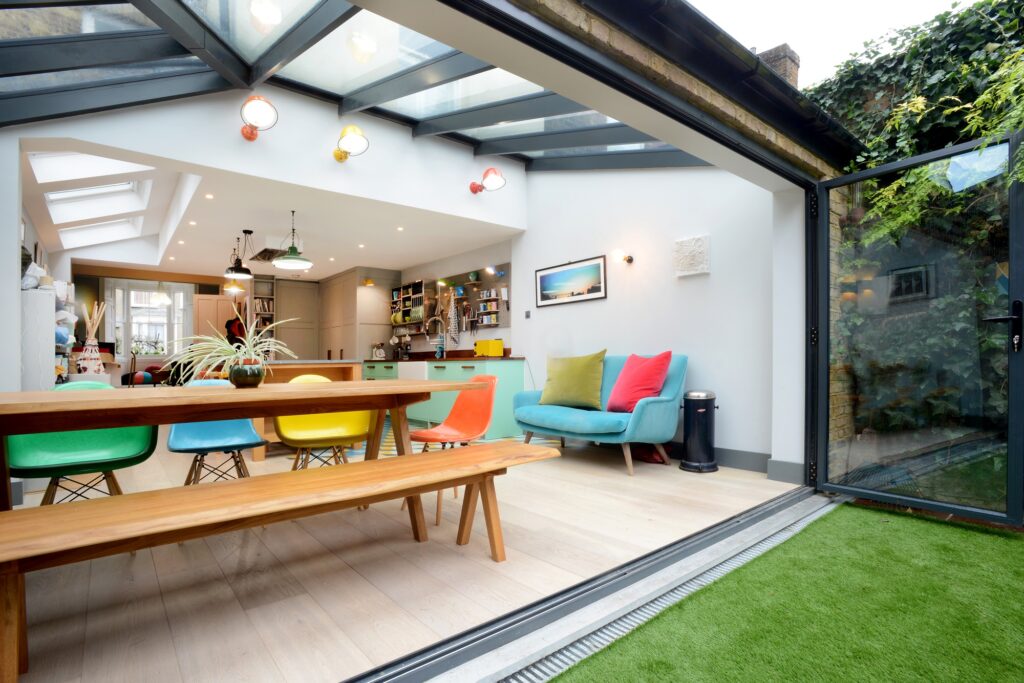
Childproof Your Home
One of the first things you should do is to childproof your home. This means identifying potential hazards and taking steps to prevent accidents. This includes securing cabinets and drawers with locks, and corner guards on furniture to reduce the risk of injury. You should also consider installing window guards to prevent falls and gates at the top and bottom of stairs. Keep small objects and choking hazards out of reach and store cleaning supplies and medications in a locked cabinet. Childproofing your home will give you peace of mind knowing your child is safe and secure.
Choose Child-Friendly Materials
When it comes to decorating your home, it is necessary to use child-safe materials. Use non-toxic paints, finishes and avoid materials that contain hazardous chemicals. Consider using long-lasting, easy-to-clean materials that can endure wear and tear, spills, and accidents. Select furniture that is child-sized, lightweight, and portable. Furniture with sharp angles or fragile textiles should be avoided. You can also use interesting and whimsical furnishings, such as bean bag chairs or floor cushions, to make your child’s room cosy and appealing.
When selecting flooring for your home, consider choosing options that are durable and easy to clean. Hardwood, tile, and laminate flooring are all good options, as they are easy to sweep and mop. Soft materials like carpets and rugs can also be great additions to a child-friendly home, but make sure they are easy to clean. However, it is best to avoid carpeting if your child is prone to allergies as they can harbour dust.
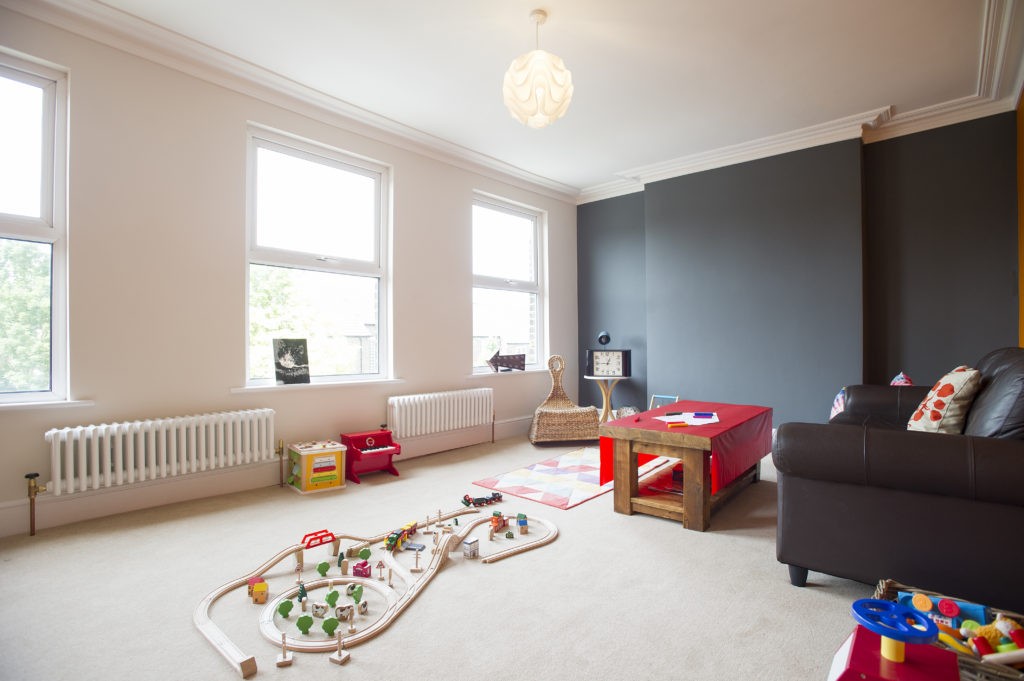
Create Designated Play Areas / Media Room
Children need plenty of space to play and explore, so remember to create designated play areas in your home. Designating a specific area in your home for playtime can help keep toys and clutter contained and make it easier to clean up. This can be as simple as setting up a play corner in your living room or designating a spare room to a playroom. You can incorporate built-in storage or use storage containers and shelves to keep toys organised and easy to access.
As children reach their teenage years, they may want a space where they can watch movies or play video games with friends. Setting up a media room with comfortable seating, a large screen TV, and surround sound can be a great addition to a child-friendly home. Creating a designated hangout space, such as a finished basement or loft area, can provide a safe and supervised area for them to socialise with friends. Make sure the space is well-lit, has comfortable seating, and has access to refreshments.
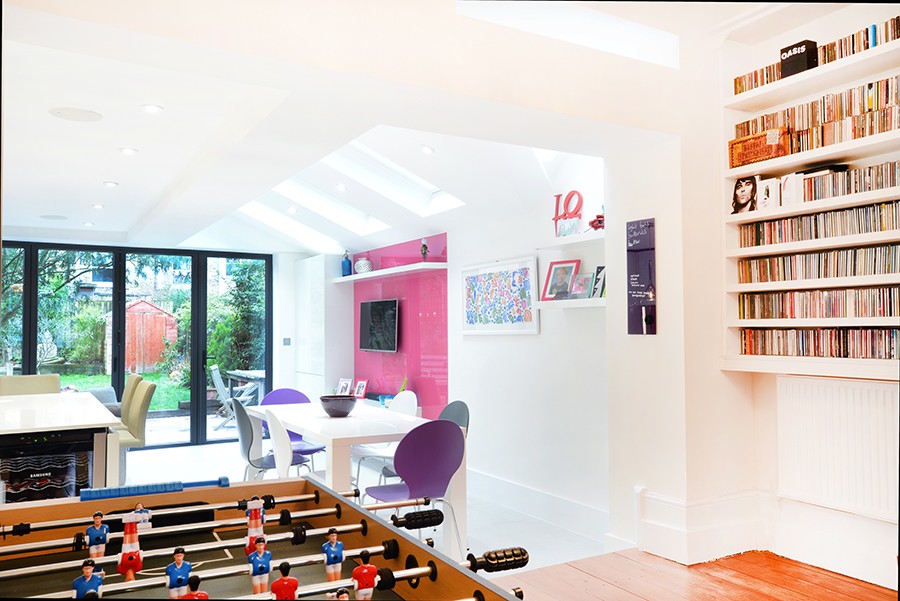
Child-Friendly Decor
Incorporating child-friendly decor is another way to create a welcoming and fun environment for your children. Hang colourful artwork, add bright throw cushions, or use playful wallpaper to create a cheerful space. You can also incorporate fun decor like wall decals, posters, or string lights to add a touch of interest. Remember to use fun and playful storage solutions like colourful bins and baskets to complement the décor or as a pop of colour. Keep in mind children’s tastes change quickly, so try to choose decor that is easy to update and change as your child grows.
As children get older, they will have their own ideas and preferences for how they want their space to look. Involve them in the design process and let them choose colours, décor, and furniture that reflect their personality and style. This will help them feel more invested in their space and encourage them to take care of it.
Choose Child-Friendly Lighting
Lighting can have a big impact on the mood and atmosphere of a room, especially for children. Consider using soft lighting options like lamps or dimmer switches to create a cosy and calming environment. You can also choose fun and playful light fixtures like string lights. Additionally, it’s important to keep in mind the safety of children when selecting lighting options. Avoid using fixtures with exposed bulbs or cords that can be easily pulled. Instead, opt for fixtures with shades or covers that prevent accidental contact with hot surfaces or electrical components. Choosing child-friendly lighting involves balancing safety, mood, and functionality to create a comfortable and inviting space for children to learn, play, and rest.
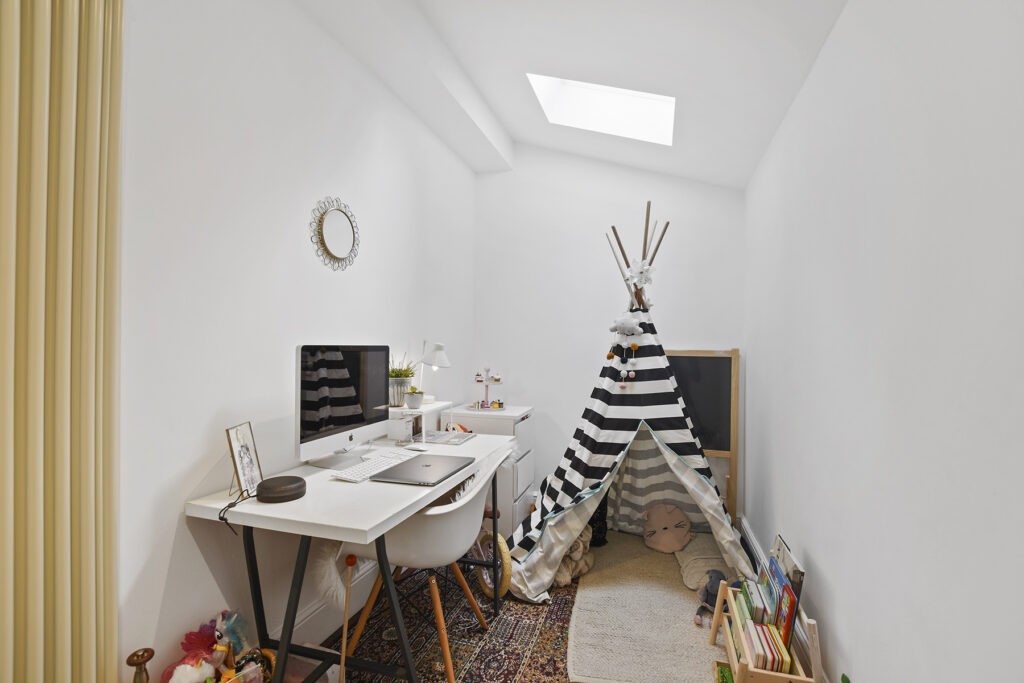
Create a Study Space or Reading Nook
Reading is a great way to encourage your child’s development and imagination, so consider installing a bookshelf in your child’s room or play area. Make sure the bookshelf is at a height that is accessible to your child and consider labelling or organising books by category to make it easy for them to find their favourites. In addition to installing a bookshelf, you can also create a cosy reading nook in your child’s room or play area. This can be as simple as adding a soft rug, cushions, and a small lamp to create a comfortable and inviting space for your child to curl up with a book.
As children grow older, they will require a place to study and focus on their homework. Having a dedicated study place will help children focus and stay organised. This might be a workstation in their bedroom or a peaceful spot in the house with few interruptions.
Create a Sensory Space
As children like exploring their senses, consider creating a sensory place in your home. This could be accomplished using various textures, colours, and scents, such as a sensory table or bin loaded with sand, water, or other items. You can also choose from a variety of textures, such as soft textiles and rough surfaces. When designing a sensory space, keep your child’s interests and preferences in mind. Some youngsters may prefer tranquil and relaxing experiences, while others choose more energetic and stimulating ones. You can customise the sensory area to your child’s needs and change it as their interests and preferences change.
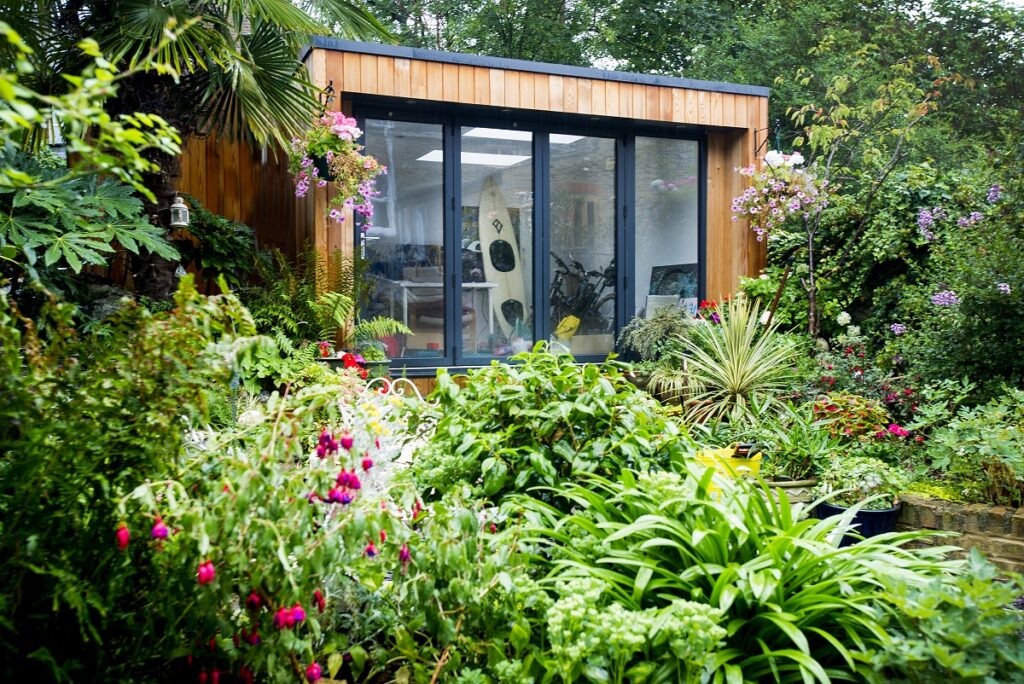
Create a Play Area Outdoors
Where possible, always try to create an outdoor space in addition to building a child-friendly indoor environment. If you have a garden, consider making a designated play area for your child. For example, a swing set, sandpit, climbing structure, or playhouse. To reduce the chance of accidents, make sure the space is sheltered and has soft surfaces such as grass or mulch. Outside play is essential for children’s physical and social development, so make sure your child has plenty of outdoor toys and games to play with. Balls, jump ropes, hula hoops, and other energetic toys could be included.
You can also incorporate games for older children to play. Consider storage for sports equipment or other activities that require equipment. This could be a designated section of the garage or outdoor storage room with shelves and hooks for equipment like bikes, hockey sticks, and skateboards.
Introducing Plants and Nature
Children benefit from spending time in nature, so consider adding plants and other natural elements into your outdoor space. Create a small vegetable or herb garden, plant flowers or shrubs, or hang bird feeders to attract wildlife. Not only will this help your child develop an appreciation for nature, but it will also help create a peaceful and calming environment.
By incorporating these options into your home, you can create a well-rounded child-friendly space that encourages your child to explore and play both indoors and outdoors. Remember to involve your child in the process, asking for their input and you’ll be well on your way to creating a home that is safe, nurturing, and welcoming for your little ones.


